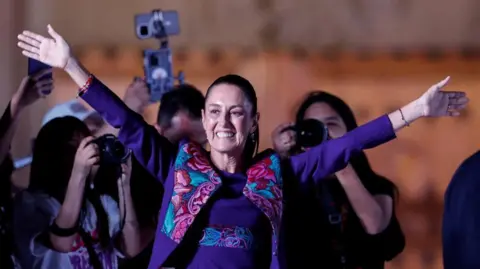
- As many as 11 people dying of hunger and malnutrition each minute compared with seven due to COVID-19
- Conflicts, climate change and higher supply-chain costs blamed for increase in hunger in Middle East and beyond
For two years, the havoc caused by the COVID-19 pandemic has dominated the headlines. Since February 24, debate over the impact of the Ukraine war on global food supplies has taken center stage. Meanwhile, another pandemic continues to take a heavy toll, only much less conspicuously.
In a report published in 2021, the charity Oxfam noted that hunger had overtaken the pandemic as the greatest crisis facing the world. It said as many as 11 people die of hunger and malnutrition every minute, compared with a global COVID-19 death rate of about seven people a minute.
It added that an additional 20 million people were pushed into extreme levels of food insecurity in 2021, raising the total number affected to 155 million across 55 countries.
The UN recently announced that after remaining stable for more than five years, the number of undernourished people globally has risen to more than 800 million people — 10 percent of the world’s population.

The COVID-19 crisis started to unfold at a time when the number of people in urgent need of food assistance around the world was already increasing, according to Mageed Yahia, director of the World Food Program’s office in the UAE and its representative to the Gulf Cooperation Council.
“In truth, we already saw this trend change in 2018, largely owing to the effects of proliferating and intensifying man-made conflicts, of climate extremes occurring with greater frequency and intensity, and of economic slowdowns taking hold in many parts,” he told Arab News.
It is estimated that the number of chronically hungry people around the world rose — for a second successive year — to almost 690 million in 2019, prior to the start of the pandemic.
By 2020, this number had climbed to 811 million people as other contributory causes were exacerbated by the effects of COVID-19, which presented the world with a truly global emergency.

Yahia said that in the past two years, the pandemic has brought economies and supply chains to a halt, destroyed businesses and affected jobs and livelihoods, all while taking a devastating toll on the health and well-being of families and communities around the world.
“As we all continue to count the costs of the fallout, it has been those least able to withstand them that have suffered the most,” he added, referring to the millions of people who were living just above subsistence level before the pandemic hit.
In the Middle East, the number of “poor” people has been driven up by the pandemic and related containment measures to 115 million, accounting for a quarter of the region’s population. A major contributory factor has been a spike in unemployment rates.
In a region where 14 million people were already unemployed, the International Labor Organization estimated that about 17 million full-time jobs were lost in the second quarter of 2020.
A Yemeni child receives humanitarian aid, donated by the World Food Programme (WFP), in the country’s third city of Taez. (AFP)
The situation for families that were already struggling to make ends meet was worsened by localized food shortages and consequent price hikes, leaving people even less able to afford enough food, according to Yahia.
“These families have had to make hard choices to support themselves, including skipping meals and compromising on the quality and nutrition of what they consume,” he said.
Pandemic or no pandemic, food insecurity is a long-term global challenge. As Laura Petrache, founder of Migrant Integration Lab and author of the book “At the Dawn of Humanity,” points out, it is predicted that the number of hungry people worldwide will keep growing as humanity continues to exert unsustainable pressure on Earth’s ability to produce enough food for its rising population.
“For human beings to live according to the Earth’s limited capacity, fundamental changes to our political and economic systems and our way of life are therefore necessary,” she told Arab News.
Human needs already exceed the absorption and production capacity of the planet’s ecosystems, according to scientists, who say environmental issues such as climate change and ocean acidification are symptoms of a more serious problem.
NATIONS AT RISK
* Afghanistan
The country is facing one of the worst humanitarian crises on the planet. Hunger and destitution have skyrocketed in the face of drought, conflict, COVID-19, the collapse of public services and a spiraling economic crisis. More than half of the population — a record 22.8 million people — are facing acute food insecurity, including 8.7 million who are on the brink of starvation, according to the IPC Global Platform. The latest nutrition data reveals that 4.7 million people could suffer from acute malnutrition this year, including 1.1 million children at risk from its most severe form.
WFP plans for 2022: To assist up to 23 million people at a cost of $2.6 billion.

——-
* Ethiopia
After more than 14 months of war in northern Ethiopia, food distribution is at an all-time low because of active conflict, access constraints and lack of financial resources. An estimated 9.4 million people require food assistance — a 40 percent increase compared with just four months ago.
WFP plans for 2022: To assist up to 8.5 million people, at a cost of $972 million.
——-
* South Sudan
In 2021, IPC analysis found that 7.2 million people faced crisis levels of food insecurity, with 2.4 million people in the emergency (IPC 4) and 108,000 in the catastrophe (IPC 5) categories. The situation is expected to deteriorate due to the effects of flooding, soaring food prices, violence and significant constraints on humanitarian access.
WFP plans for 2022: To assist up to 5.6 million people, at a cost of $1.1 billion.

——-
* Nigeria
It is projected that about 18 million people will face acute hunger during the lean season between June and September this year. Severe hunger is being driven by climate shocks, persistent conflict, food-supply issues, high food prices and reduced household purchasing power. Some populations in areas in the northeast affected by conflict are projected to slide into catastrophic food insecurity at the peak of the lean season, if not sooner.
WFP plans for 2022: To assist up to 1.8 million people, at a cost of $405 million.
——-
* Yemen
About 16 million people are affected by acute food insecurity and in need of urgent assistance. They include 2.3 million children under the age of 5 who are suffering from acute malnutrition, 400,000 of whom are at risk of death if untreated. A funding crunch has forced the WFP to reduce the size of food rations received by 8 million people in Yemen amid a serious escalation in fighting and continuing economic deterioration.
WFP plans for 2022: To assist up to 16 million people, at a cost of $2 billion.

To be sure, the pandemic is neither the sole nor the biggest driver of hunger around the world.
“I believe that global challenges and new, explosive trends are adding to the complexity of the issue,” said Petrache. “Denial, blind faith in technological solutions, and the weakness of international environmental agreements are all contributing factors to a global crisis.”
She cites conflict, extreme poverty and the emergence of armed groups as common challenges faced by countries whose populations are suffering from hunger and malnutrition.
“At the same time, climate-related droughts and floods have intensified, overwhelming the ability of affected countries to respond before the next disaster hits,” she said.
Hunger is of course hardly a new challenge. In the year 2000, world leaders gathered at the UN to commit to achieving eight Millennium Development Goals by 2015, the first of which was the eradication of extreme poverty and hunger.
This goal was not achieved by the deadline. Instead it was replaced by another commitment when a new set of Sustainable Development Goals was formulated in 2015. Ending hunger, achieving food security and improved nutrition, and promoting sustainable agriculture by 2030 is high on this list, listed as SDG2.
Maimun Ali, 31, holds her 2-year-old child at Sahal Macalin Ciise Stabilization Centre in Baidoa, Somalia, on February 14, 2022. (AFP)
Experts are doubtful, however, that the goal of a world with zero hunger can be achieved in the coming decade without immediate action to get to the root of the problem.
“This means putting an end to conflict, anticipating and adapting to new climate realities, and addressing economic inequalities that breed marginalization and deprivation,” Yahia said.
He pointed out that current efforts notwithstanding, the “2021 State of Food Security and Nutrition in the World” report predicts that SDG2 will be missed by a margin of nearly 660 million people, 30 million more than in a scenario in which the pandemic had not occurred.
In making that estimate, the authors drew on four editions of the flagship report, which tracks progress made toward ending hunger and achieving food security. It is jointly prepared by several international bodies including the WFP, the World Health Organization and the UN’s Food and Agriculture Organization.
Petrache said that the global hunger crisis will not come to an end in tandem with the pandemic. She believes the prevalent “neoliberal economic system” is the primary cause of increasing impoverishment and the displacement of farmers and rural peoples everywhere.
“The neoliberal economic system is responsible for the increasing degradation of nature, including the land, water, plants, animals and natural resources, having put all these vital resources under centralized systems of production, procurement and distribution within the confines of a global market-oriented system,” she said.
KSrelief distributes 100 tons of food and shelter aid to one thousand families in need in Maidan Wardak Province, Afganistan. (SPA/File Photo)
According to Petrache, the problem of hunger is compounded by conflict, which is the leading cause of population displacement and human deprivation. A particularly egregious case is Yemen, where 3.6 million people have been displaced and approximately 17 million are in desperate need of food as a result of a protracted, multi-sided civil war.
“People are struggling to survive, there have been deadly outbreaks of COVID-19, cholera and other communicable diseases, and the specter of famine looms closer by the day,” Petrache said of the situation in the country.
The UN has warned that Ethiopia, Madagascar and South Sudan are also on the brink of famine, with another three dozen countries also at risk.
Last but not least, the pandemic aggravated the problems by forcing more than 1.6 billion children in nearly 200 countries out of schools. Consequently, child hunger and malnutrition have surged among the 370 million children who lost access to nutritious meals served daily at schools in at least 150 countries.
“The ‘three Cs’ — conflict, climate change and COVID-19’s economic impact — have created a perfect storm that requires a global response,” Yahia said.
“The cost of doing nothing will be measured in lives lost, increased destabilization and human migration, and squandered productivity and human potential.”
Clearly, urgent assistance is needed to help protect the most vulnerable populations of the Middle East and other regions from hunger and malnutrition.
Fortunately, it is not too late for rich countries, philanthropists and wealthy individuals to increase funding for the programs that are attempting to address the problem.


































